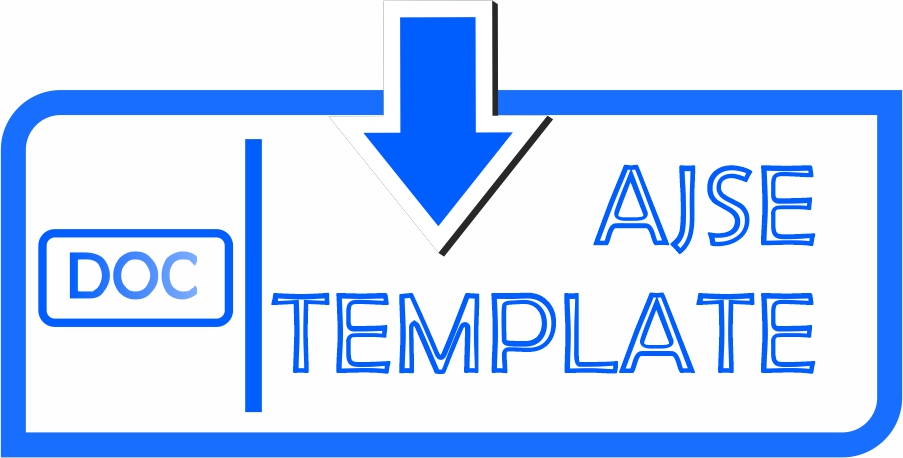TESTING OF POLONITE, GAZOBETON, PAREPARE BLACK VOLCANIC SAND BEACH, AND KADIDIRI CORAL BEACH SAND FOR PHOSPHORUS REMOVAL FROM WATER AND WASTEWATER IN CONSTRUCTED WETLAND
Dian Dwi Kartikasari(1*), Supranto -(2), Rochmadi -(3)
(1) Fakultas Teknik, Universitas Gadjah Mada
(2) Jurusan Teknik Kimia, Fakultas Teknik, Universitas Gadjah Mada
(3) Jurusan Teknik Kimia, Fakultas Teknik, Universitas Gadjah Mada
(*) Corresponding Author
Abstract
Keywords
Full Text:
PDFReferences
Adam, K. Sovik, A.K. Krogstad, T. Heistad, A. 2007. Phosphorous Removal by the Filter Materials Light-Weight Aggregates and Shellsand - a Review of Processes and Experimental Set-Ups for Improved Design of Filter Systems for Wastewater Treatment. VATTEN, Vol. 63, pp. 245-257.
Arias, Carlos A & Brix, Hans. 2004. Phosphorus Removal in Constructed Wetlands: Can Suitable Alternative Media be Identified. Proceedings of the 9th International Conference on Wetland Systems for Water Pollution Control, pp. 655-661.
Ayoub, G. Koopman, B. Pandya, N. 2001. Iron and Aluminum Hydroxy (Oxide) Coated Filter Media for Low-Concentration Phosphorus Removal. Water Environment Research. Vol. 73, pp. 478-485.
Bashan, Y. De-Bashan, L.E. 2004. Recent Advances in Removing Phosphorus from Wastewater and Its Use as Fertilizer. Water Research. Vol 38(19), pp 4222-4246.
Brix, Hans. 1994. Use of Constructed Wetlands in Water Pollution control: Historical Development, Present status, and Future Perspectives. Wat. Sci. Tech. Vol. 30, No. 8, pp. 209-223
Brooks, A. S. et al. 2000. Phosphorus Removal by Wollastonite: a Constructed Wetland Substrate. Ecological Engineering Vol. 15, pp. 121–132.
Brogowski, Z. & Renman, G. 2004. Characterization of Opoka as a Basis for Its Use in Wastewater Treatment. Polish Journal of Environmental Studies, Vol. 13, No. 1, pp. 15-20.
Cooke, J.G. 1992. Phosphorus Removal in a Wetland after a Decade of Receiving a Sewage Effluent. Journal of Environmental Quality, Vol. 21, pp 733-739.
Diamadopoulous, E. Benedek, A. 1984. The Precipitation of Phosphorus from Wastewater Through pH Variation in the Presence and Absence of Coagulants. Water Research, Vol. 18(9), pp. 1175-1179.
Drizo, A. Frost, C.A. Grace, J. Smith, K.A. 2000. Phosphate and Ammonium Distribution in a Pilot Scale Constructed Wetland with Horizontal Subsurface Flow using Shale as a Substrate. Water Research. Vol. 34(9), pp. 2483-2490.
Environmental Protection Agency Act, 1992 Under section 97. Num. 7 of 1992.
Holford, I.C.R. Patrick, W.H. Jr. 1979. Effects of Reduction and pH Changes on Phosphate Sorption and Mobility in an Acid Soil. Soil Science Society of America Journal, Vol. 43, pp. 292-296.
Indonesia: Government Regulation No. 82/2001 Management of Water Quality And Control Over Water Pollution
Johansson, Lena. 1997. The Use of Leca (Light Expanded Clay Aggregrates) fo the Removal of Phosphorus from Wastewater. Selected Proceedings of the 5th International Conference on Wetland Systems for Water Pollution Control. Vol. 35, pp. 87–93
Karczmarczyk, A. & Renman, G. 2011. Phosphorus Accumulation Pattern in a Subsurface Constructed Wetland Treating Residential Wastewater. Water, Vol. 3, No. 1, pp. 146-156
Khambali, Imam. 2011. Wetland Technology For Domestic Waste Water Management.
Mineral and Coal Information. 2005. Research and Development Center for Mineral and Coal Technology. Internet:http://www.tekmira.esdm.go.id/data/PasirKwarsa/ulasan.asp [20. May, 2012].
Opoku, Benjamin. 2007. Suitability of Different Reactive Filter Media for Onsite Wastewater Treatment. Master Thesis. Royal Institute of Technology.
Richardson, C.J. Craft, C.B. 1993. Effective Phosphorus Retention in Wetlands: Fact or Fiction ?. In Moshiri, G.A. edition, Constructed wetlands for Water Quality Improvement, Lewis Publishers, Boca Raton, Fl., pp. 271-282.
Sakadevan, K. Bavor, H.J. 1999. Nutrient Removal Mechanisms in Constructed Wetlands and Sustainable Water Management. Journal of Water Science and Technology. Vol. 40(2), pp. 121-128.
Sandatlas. Volcanis Sand. Internet: http://www.sandatlas.org/2010/02/volcanic-sand/ [20. may, 2012]
Tamatamah, RA. 2005. Phosphorus Sorption in Relation to Soil Grain Size and Geochemical Composition in the Simiyu and Kagera River Basins, Tanzania. Tanz. J. Sci. Vol. 31, No. 2
Technology of Production of Aerated Concrete by Conveyor Technology (non-Autoclaved Gazobeton 60-100). 2011. Internet: http://www.gazobeton.biz [29. May, 2012]
Tsalakanidou, Ioanna. 2006. Potential of Reactive Filter Materials for Small-Scale Wastewater Treatment in Greece - Batch & Column. Master Thesis. Royal Institute of Technology.
Yahya, S. Al-Degs, Musa I. El-Barghouthi, Ayman. Issa, Majeda. Khraisheh, Gavin. Walker, M. 2006. Sorption of Zn(II), Pb(II), and Co(II) using Natural Sorbents: Equilibrium and Kinetic Studies, Water Research. Vol. 40, pp. 2645–2658.
Zhu, T. Jenssen, P.D. Maehlum, T. Krogstad, T. 1997. Phosphorus Sorption and Chemical Characteristics of Lightweight Aggregates (LWA) – Potential Filter Media in Treatment Wetlands. Water Science and Technology. Vol. 35(5), pp. 103-108
Article Metrics
Refbacks
- There are currently no refbacks.
Copyright (c)
Universitas Gadjah Mada


